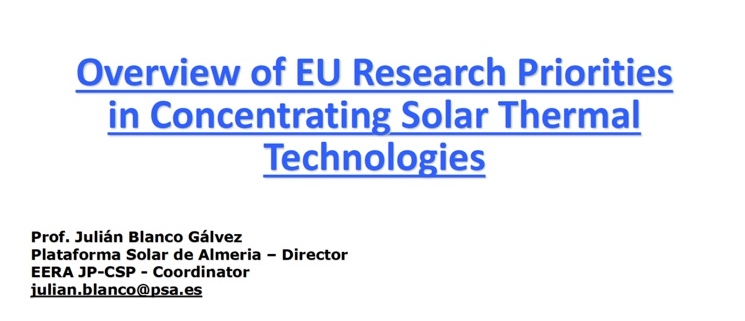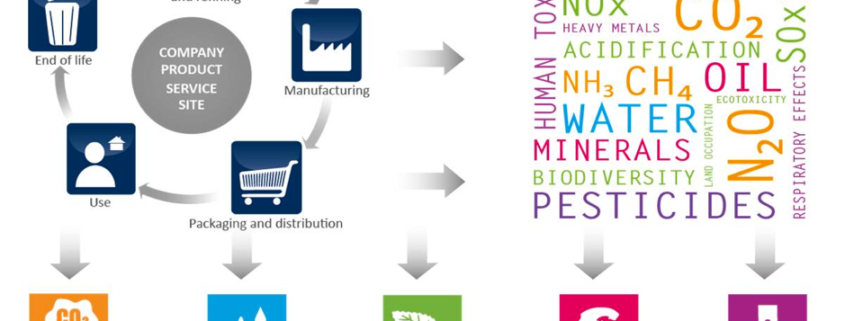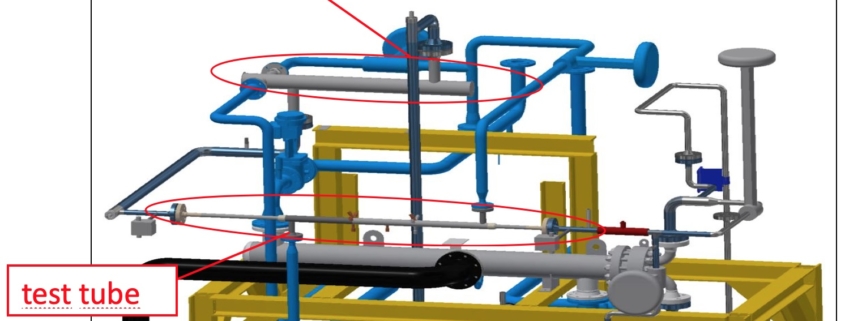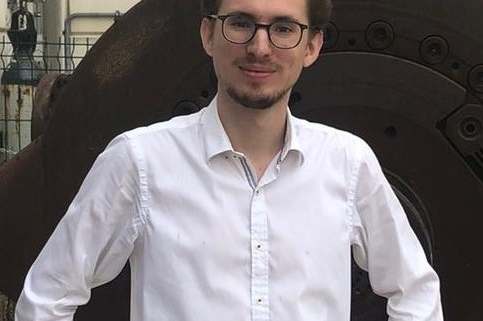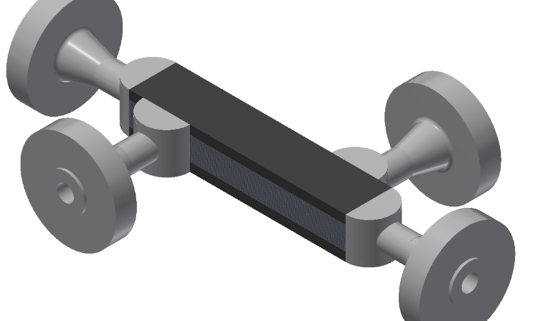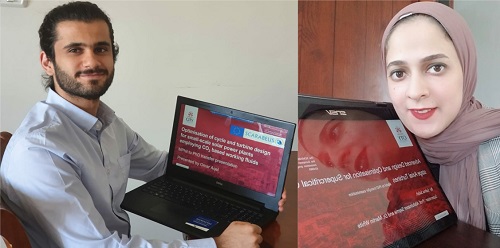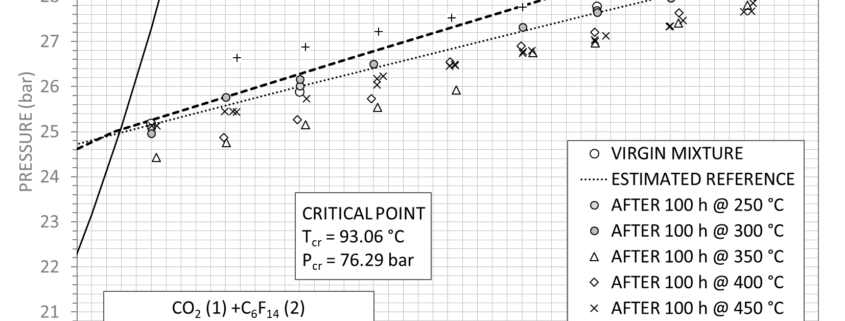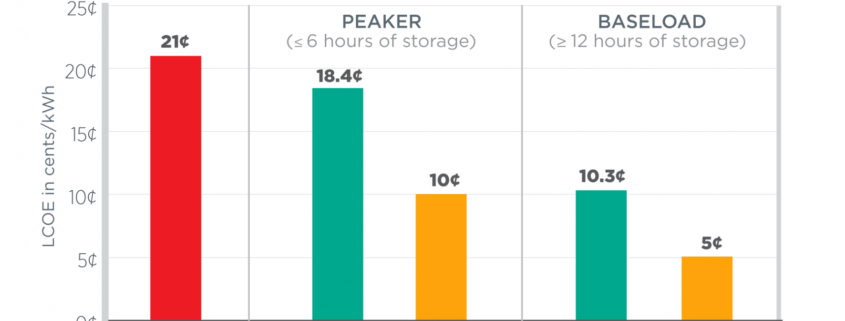SolarPACES 2020: SCARABEUS listed as one of the flagship R&D projects in Europe by Prof. Julián Blanco, Managing Director of the Solar Platform in Almería (PSA-CIEMAT)
/in News, Others /by jose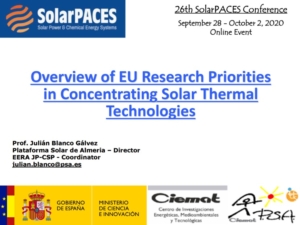
This year, most conferences have made the decision to go virtual in order to circumvent the limitations on mobility brought about by COVID-19. SolarPACES has been no different in this regard but the
Wednesday’s plenary session, chaired by Ana María Ruiz Frías (Solar Committee Chile), focused on CSP Technology Innovation. All continents were represented by high-level speakers -Australia, Asia, America and China- who introduced their vision about research priorities in Concentrating Solar Power and the tools and funding schemes to enable their accomplishment.
In this session, Europe was represented by Prof. Julián Blanco, Director of Plataforma Solar de Almería (CIEMAT), largest research, development and test centre in Europe for Concentrating Solar technologies. Prof. Blanco’s presentation provided an excellent summary of the current research priorities identified by the European Commission, along with a very informative review of the ongoing research activities and flagship projects in Europe. With the aim to make the presentation comprehensive, the contents were broken down into twelve R&I areas approved by the Steering Group of the Solar Energy Technology (SET) Plan in 2017.
The SCARABEUS consortium is grateful to Prof. Julián Blanco for making the presentation available for download (link).
Quantis just completed the first phase of Life Cycle Assessment. Know a little bit about this crucial aspect of power plant assessment
/in Sin categoría /by joseQuantis is leading the environmental Life Cycle Assessment (LCA) assessment to evaluate the innovative SCARABEUS technology for CSP application with the objectives to (i) inform the key environmental performance indicator of the SCARABEUS technology development; (ii) to guide the development of the technology towards a more sustainable solution; (iii) to benchmark the SCARABEUS technology against alternative conventional and state of the art technologies.
LCA is a structured, comprehensive, and internationally standardized method. It quantifies all relevant emissions and resources consumed and the related environmental and health impacts and resource depletion issues that are associated with any goods or services (“products”). Life Cycle Assessment takes into account a product’s full life cycle: from the extraction of resources, through production, use, and recycling, up to the disposal of remaining waste.
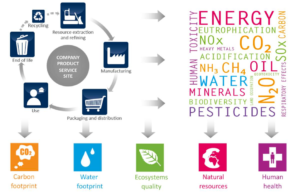
Figure 1: Workflow of Life Cycle Assessment.
Critically, the LCA approach help to avoid resolving one environmental problem while creating other unwanted “shifting of burdens”. LCA helps to prevent, for example, increasing land use or acid rain while reducing greenhouse gases, or increasing emissions in one country while reducing them in another. Life Cycle Assessment is a vital decision support tool to help effectively and efficiently make consumption and production more sustainable.
Find out more on Quantis’ website: https://quantis-intl.com/research/scarabeus/
The Institute for Energy Systems and Thermodynamics at TU Wien getting ready for the testing campaign
/in News, Others /by joseDuring the last months, IET concentrated on design tasks according to work package 4, where pre-tests for the design of the air-cooled condenser (ACC) and the recuperator (printed circuit heat exchanger) are planned. Therefor several modifications of the test rig are necessary, see Figure 1:
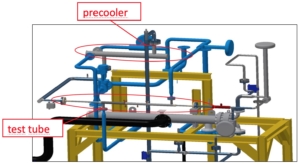
Figure 1: Modifications of test rig at IET. Grey: additional heat exchangers (precooler and test tube). Blue: cooling water lines.
With the combination precooler and test-test-tubes, desuperheating and condensation experiments at a pressure level of p = 66 bar are planned. For pure CO2 the corresponding condensation temperature is 26,11 °C. Maximum CO2-temperature will be 180 °C, so different desuperheating / condensation tests are possible depending on entrance temperature of CO2 and cooling load of the precooler. In the first step, experiments with pure CO2 will be done, then testing with blended CO2 by adding a refrigerant (R1234ze) will follow. Adding a blend will give a first impression of about the behaviour of a mixture instead of pure CO2 and will help to train the handling of harmless mixtures on the rig, in the perspective of the future planned tests with other blends being developed and tested at UBS and POLIMI.
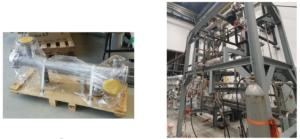
Figure 2: Left: Precooler delivered from KELVION. Right: test rig under modification.
The SCARABEUS team keeps growing at University of Seville
/in News, Others /by jose
The SCARABEUS team at University of Seville keeps growing. USE is very happy to welcome Pablo Rodríguez to support the optimization and integration tasks. Find some more information about him below and follow his activities through LinkedIn here: https://www.linkedin.com/in/pablo-enrique-rodr%C3%ADguez-de-arriba-9088b91b7/
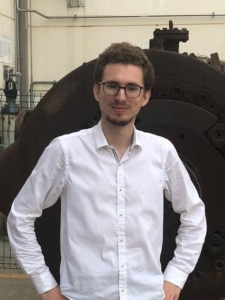
Pablo Rodríguez standing in front of a Ljungström turbine at the lab
I’m Pablo Rodríguez, a Sevillian engineer recently graduated from the master’s degree in Industrial Engineering at the Escuela Técnica Superior de Ingeniería (University of Seville). Specialised in Energy Engineering, I’m keen on topics such as energy efficiency, process optimization, power generation, renewable energies, SWRO plants or refrigeration. It’s in the latter of these subjects that I wrote my BSc and MSc theses: performing an analysis about the international regulations of refrigerants (anybody sees the link to some of the dopants used in SCARABEUS?).
I just joined the Thermal Power Group (Department of Energy Engineering, University of Seville) as a researcher. I’m sincerely enthusiastic about being part of the SCARABEUS project, in which I promised to put all my commitment and energy to achieve the best results.
Recuperator Model with design process using pure CO2
/in News, Others /by joseThe SCARABEUS concept relies on a recuperative cycle using supercritical carbon dioxide as working fluid. Being supercritical and in order to achieve high efficiency, very high pressures and temperatures are involved and a recuperator becomes mandatory. This is a device which can improve the thermodynamic cycle efficiency by cooling the sCO2 after its expansion and heating it after its compression, without any additional heat exchange with the environment.
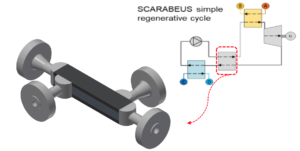
3D model of the recuperator to be installed in the test rig at TUW
The advantage to use printed circuit heat exchanger technology in the recuperator is to withstand high pressure and high temperature with reduced footprint (large area-to-volume ratio). This is why PCHE is the technology of choice in SCARABEUS. The 3D model above represents the recuperator which will be installed in the test rig at TUW. It is designed for a pressure of 220 bar and a temperature of 650°C and the geometry of the internal channel configuration is shown below.
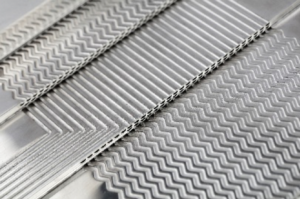
Internal channels of the PCHE developed by KELVION for SCARABEUS
Some CFD calculations will be performed to study new types of internal geometries in order to optimize the thermal-hydraulical performances and to decrease heat exchange area. While this technology is already very compact, the Company is pursuing further reductions of footprint.
Researchers from City pass milestone on the route to PhD
/in News, Others /by joseResearchers from City pass milestone on the route to PhD
This week two researchers from the SCARABEUS research team at City, University of London, successfully completed their transfer from MPhil to PhD. This milestone, which has been completed just over a year since beginning at City, marks the successful transition from registration as a Master of Philosophy (MPhil) student to a full PhD candidate.
For the transfer, Mr Omar Aqel and Ms Salma Salah both prepared a technical report containing a literature review and an update on their work to date, and presented a 30-minute presentation over Microsoft Teams, followed by Q&A, to an internal audience of academics and researchers from City.
Mr Omar Aqel presented his report entitled “Optimization of cycle and turbine design for small-scale solar power plants employing CO2-based working fluids”. Within Omar’s work he has investigated the effect of candidate dopants on optimal cycle conditions within CSP applications, with a particular focus on the expansion process. Results highlighted the change in working fluid properties such as molecular weight, speed of sound, density, and the adiabatic coefficient. Having also explored the sensitivity of turbine design to dopant type and amount, Omar will now focus on the application of CO2-based working fluids in small-scale power plants. He aims to investigate their feasibility using an integrated system approach which accounts for turbomachinery design restrictions that are unique to small-scale installations.
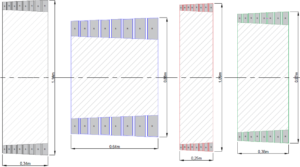
Ms Salma Salah presented her report entitled “Advanced design optimisation methods for supercritical CO2 multi-stage axial turbines”. Within Salma’s work she discussed the various aspects of axial turbine design including design methodology, previous preliminary and computational fluid dynamic (CFD) studies on sCO2 turbines, in addition to existing prototypes and conceptual designs for sCO2 turbomachinery. In this work, 100 kW and 100 MW design models have been developed and a parametric study has been conducted to examine the effect of various design parameters on the performance of a small-scale sCO2 turbine. This work was concluded by detailing the future steps for her research.
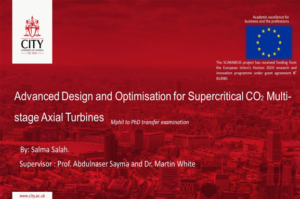
New Open Access publication by University o Brescia and Politecnico di Milano provides information about characterisation of supercritical CO 2 blends
/in Conference and journal papers, News /by joseIn the last Open Access paper published by UNIBS and POLIMI, a new methodology for
the thermal stability test of CO2 blends have been developed and tested.
The method proposed relies on the study of the thermodynamic behaviour of the
working fluid from the variation of the van der Waals coefficients. The comparison of
the estimated coefficients a, b and the molar mass (MM) from the regression of the
experimental data (in the gas phase), starting from the virgin fluid isochoric line, and
after different thermal stress test, can be representative of potential decomposition of
the investigated fluid. As a consequence of the thermal stress, the substance
decomposes in a mixture of different unknown species that, for simplicity, is assumed
as a pure fluid characterised by different coefficients a, b and MM. Moreover, starting
from the obtained parameters, the isothermal compressibility k T can be used as a
proper index to highlight the impact of the thermal degradation on the power cycle.
An example of the new method is briefly discussed for a mixture of carbon dioxide and
perfluorohexane, with molar fractions of 80% and 20% respectively. In Figure 1 , the
virgin fluid measurements are along mixture density value of 99.4 kg/m 3 , in the gas
phase, while measured p-T points after each thermal stress are represented. The best
fit of the experimental values, using the van der Waals equation of state, yields the
values in Table 1 , assuming a pure fluid behaviour of the mixture, while Table 2 shows
the resulting isothermal compressibility k T at different temperatures. Since
measurements at 250°C and 300°C are in agreement with the fresh mixture, the values
were included for the calculation of the virgin mixture parameters.
Although the van der Waals parameters are slightly different after the thermal stress
tests at 350°C and 400°C, the mixture can be considered thermally stable up to 400°C:
this behaviour is also confirmed by the parameter k T . Decomposition phenomena occur
from 450°C where not only the isothermal compressibility increases by more than 50%
with respect to the virgin mixture but also a strong deviation of the van der Waals
parameters from initial values can be observed
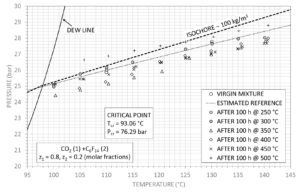
Figure 1 Results of P-T measurements for the mixture CO 2 +C6F 14 .
Table 1 Parameters a, b and MM of the van der Waals equation of state of the mixture carbon dioxide and perfluorohexane.
| a
(MPam6kmol-2) |
b
(m3kmol-1) |
MM
(kgkmol-1) |
|
| Virgin mixture | 0.818 | 0.086 | 102.4 |
| 350°C | 0.901 | 0.087 | 102.9 |
| 400°C | 0.924 | 0.088 | 101.0 |
| 450°C | 0.016 | 0.360 | 158.7 |
| 500°C | 0.004 | 0.584 | 176.1 |
Table 2 The estimated isothermal compressibility kT of carbon dioxide and perfluorohexane at 120°C for the virgin and the decomposed mixture using the van der Waals coefficients and MM of Table 4.
| 1/kT
(MPa) |
u(kT)
(MPa) |
|
| Virgin mixture | 2.246 | 0.052 |
| 350°C | 2.084 | 0.054 |
| 400°C | 2.072 | 0.057 |
| 450°C | 3.435 | 0.122 |
| 500°C | 4.149 | 0.247 |
PS: For more information, follow this link to the online article: link.
Two Open Access publications by partners of the SCARABEUS consortium just published in Applied Sciences’ special issue on Recent Advancement of Thermal Fluid Engineering in the Supercritical CO2 Power Cycle
/in Conference and journal papers /by joseThis Special Issue is comprised of a selection of technical papers dealing with various
aspects of supercritical Carbon Dioxide technology for power generation. The
publication is published by MDPI, with Prof. Jeong Ik Lee (Korea Advanced Institute of
Science and Technology, Korea) and Prof. David Sánchez (University of Seville, Spain)
serving as Guest Editors.
University of Seville sets the stage for the economic assessment of the SCARABEUS
technology
The paper by University of Seville aims to estimate the cost of electricity that should be
expected from Concentrating Solar Power plants making use of either steam turbines
(state-of-the-art technology) or standard supercritical CO2 power cycles (so-called next
generation CSP plants). The objective of this is twofold. First, to assess the actual
potential of sCO2 technology to reduce the cost of electricity produced by
contemporary solar tower plants with large scale thermal energy storage. Second, to
check whether or not such reduction suffices to achieve the very ambitious objectives
set forth by the solar community (currently achieved by large-scale photovoltaics).
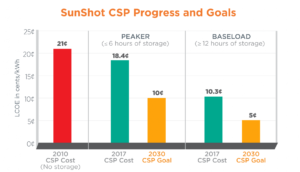
Figure 1 Goals and current costs for solar electricity as set forth by the SunShot programme.
The results confirm that sCO2 technology has the potential to reduce the cost of
producing solar electricity with respect to the current technology based on steam
turbines. Unfortunately, whilst these results serve to confirm the claims that sCO2 is
more cost effective than steam, they also suggest that the foreseen cost reduction will
not enable hitting the long-term 5¢/kWh goal.
PS: For more information, follow this link to the online article: link.
City University looks into feasible turbine designs for distributed power generation
systems based on sCO 2
Ms. Salma Salah, a PhD student from the SCARABEUS research team at City, University
of London, has published her first paper entitled “Mean-Line Design of a Supercritical
CO2 Micro Axial Turbine” in a Special Issue on sCO2 technology in Applied Sciences.
This paper examines the effect of various design parameters on the performance and
feasibility of a micro-scale axial sCO2 turbine. The design methodology developed will
later be used to design the turbine for the SCARABEUS plant.
According to the abstract of the paper, the aim of this study is to investigate the design
of a single-stage 100 kW sCO 2 axial turbine through the identification of optimal
turbine design parameters from both mechanical and aerodynamic performance
perspectives. For this purpose, a preliminary design tool has been developed and
refined by accounting for passage losses using loss models that are widely used for the
design of turbomachinery operating with fluids such as air or steam. The designs were
assessed for a turbine that runs at inlet conditions of 923 K, 170 bar, expansion ratio of
3 and shaft speeds of 150k, 200k and 250k RPM respectively. It was found that feasible
single-stage designs could be achieved if the turbine is designed with a high loading
coefficient and low flow coefficient. Moreover, a turbine with the lowest degree of
reaction, over a specified range from 0 to 0.5, was found to achieve the highest
efficiency and highest inlet rotor angles
PS: For more information, follow this link to the online article: link.


